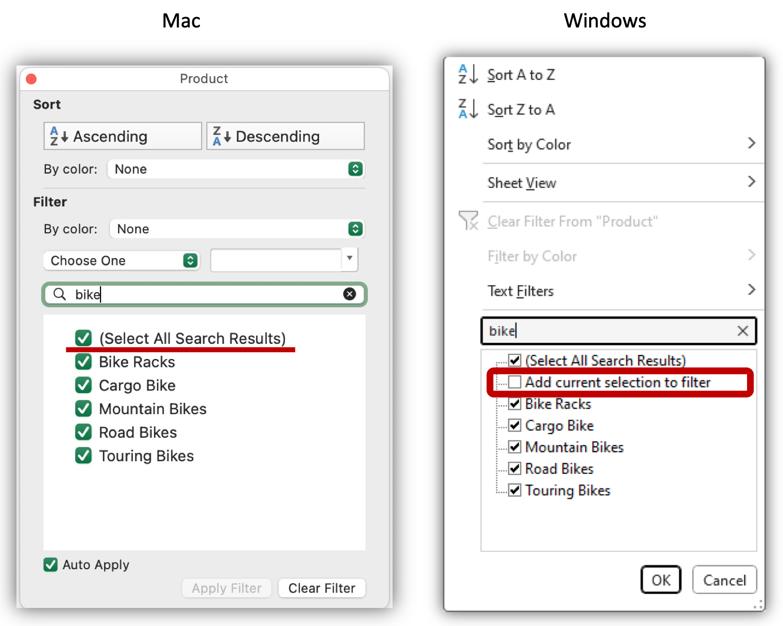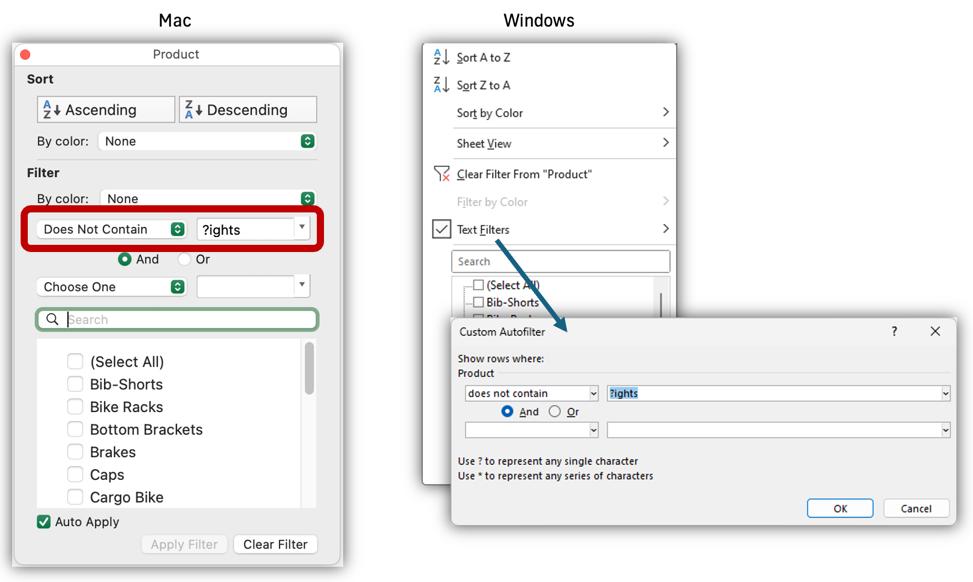Excel for Mac: Can’t Add Current Selection to Filter
14 June 2024
This week in our series about Microsoft Excel for Mac, we continue on our topic about the Filter dialog, discussing a missing option and the different way to apply text filters. We also have a tip about wildcards.
If you use Excel for Mac, you’re undoubtedly going to filter your data at some point, and it’s important to know how the Filter dialog works, and what limitations you have to deal with.
Missing from Mac: Add Current Selection to Filter
If you have a long list of values in your Filter dialog, you can use the search field rather than scrolling through the entire list. This makes it easy to find and select what you want. Unfortunately, there’s one handy capability that’s missing on Mac: the ability to add current selections to the filter. It’s found on Windows, as in the screenshots below. On Mac, you’re limited to filtering with selections that are shown in the dialog. If you use the search feature, then you can only filter for items that match your search. It’s more flexible on Windows, because you can use the search filter, select some items, and choose ‘add current selection to filter’, then do a different search, and add more items to the filter.
For example, if you had a list of products and you searched for “bike”, you could add any items that contain the word “bike” to the filter. Then you could search for “chain” and add it to the filter. On Mac, if you want to select both “bike” and “chain” at the same time, the best you could do is to search for “i”, which is the only common letter.
In the screen shots below, we show the Filter dialog from Mac and Windows, indicating that ‘Add current selection to filter’ is only available on Windows.

Text filtering
You can apply text filters on both Mac and Windows, but it’s slightly different. As shown in the screenshots below, the text filtering options are found in the Filter dialog on Mac, but on Windows, they’re found in the ‘Custom Autofilter’ dialog, which you can open from the Text Filters menu in the main dialog. Filtering works the same once you’ve set up your criteria.
One important thing to note is that there are some instructions about how to use wildcards, but the instructions aren’t shown on Mac. You just need to know that you can use wildcards, as below:
- use ? to represent any single character. For example, if you want to remove “lights” and “tights” from your list, you could use the criteria “Does not contain: ?ights”
- use * to represent any series of characters.

We hope you find this topic helpful. Check back for more details about Excel for Mac and how it’s different to Excel for Windows.

